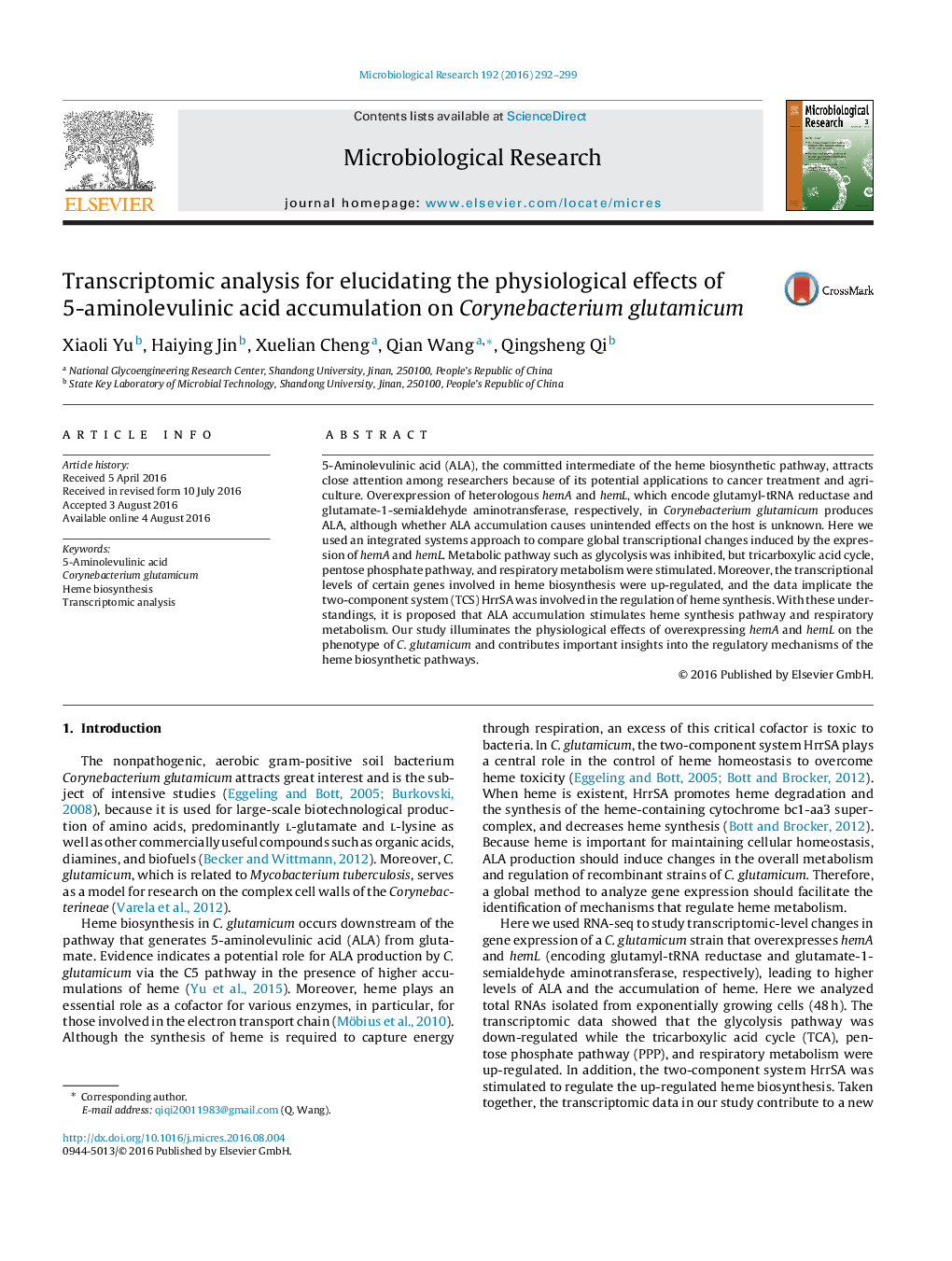| کد مقاله | کد نشریه | سال انتشار | مقاله انگلیسی | نسخه تمام متن |
|---|---|---|---|---|
| 2091880 | 1545982 | 2016 | 8 صفحه PDF | دانلود رایگان |
5-Aminolevulinic acid (ALA), the committed intermediate of the heme biosynthetic pathway, attracts close attention among researchers because of its potential applications to cancer treatment and agriculture. Overexpression of heterologous hemA and hemL, which encode glutamyl-tRNA reductase and glutamate-1-semialdehyde aminotransferase, respectively, in Corynebacterium glutamicum produces ALA, although whether ALA accumulation causes unintended effects on the host is unknown. Here we used an integrated systems approach to compare global transcriptional changes induced by the expression of hemA and hemL. Metabolic pathway such as glycolysis was inhibited, but tricarboxylic acid cycle, pentose phosphate pathway, and respiratory metabolism were stimulated. Moreover, the transcriptional levels of certain genes involved in heme biosynthesis were up-regulated, and the data implicate the two-component system (TCS) HrrSA was involved in the regulation of heme synthesis. With these understandings, it is proposed that ALA accumulation stimulates heme synthesis pathway and respiratory metabolism. Our study illuminates the physiological effects of overexpressing hemA and hemL on the phenotype of C. glutamicum and contributes important insights into the regulatory mechanisms of the heme biosynthetic pathways.
Journal: Microbiological Research - Volume 192, November 2016, Pages 292–299
